How the California Condor Comeback Was Hatched
Once on the brink of extinction, the massive birds now number in the hundreds.
Excerpted with permission from Nursery Earth: The Wondrous Lives of Baby Animals and the Extraordinary Ways They Shape Our World, by Danna Staaf, published June 2023 by The Experiment. All rights reserved.
Humans have been raising the young of other animals since long before recorded history. We’ve raised them for food, for friends, and for fun. These days, we’re raising a greater diversity of species, and for a greater diversity of reasons, than ever before. In large part, this diversification is motivated by a better understanding of our impacts on, and interdependence with, all the ecosystems of our planet.
Realizing that we’ve already driven many species to extinction, we design captive breeding programs to try to save the endangered ones. Finding that industrialized farming of mammals contributes to climate change and habitat destruction, we branch out into breeding new protein sources. With overfishing rampant throughout the world’s oceans, we turn to aquaculture of our favorite species. Many of these efforts have had encouraging results, while others carry troubling implications along with their promise.
The early life stages of animals—eggs, embryos, larvae, and hatchlings—tend to be the most vulnerable to environmental impacts. Yet we rarely think about them until the problems are glaringly obvious: eagle eggs crushed because of DDT, salmon fry struggling to survive in contaminated streams, sea turtle hatchlings disoriented by light pollution. But once we recognize the situation, we can often help. Science and legislation brought back the eagles, various conservation efforts are underway for salmon, and turtle-safe lighting along with other nest protections are helping some sea turtle populations to rebound. One of my favorite stories of conservation success is the California condor.
When I was born, in the early 1980s, there were only 27 California condors in the world. One of my most vivid memories of visiting the Los Angeles Zoo as a young child was climbing up on hot metal bleachers to watch a bird program in which staff told us about efforts to rebuild the condor population. At the time, I was probably shorter than an adult condor.
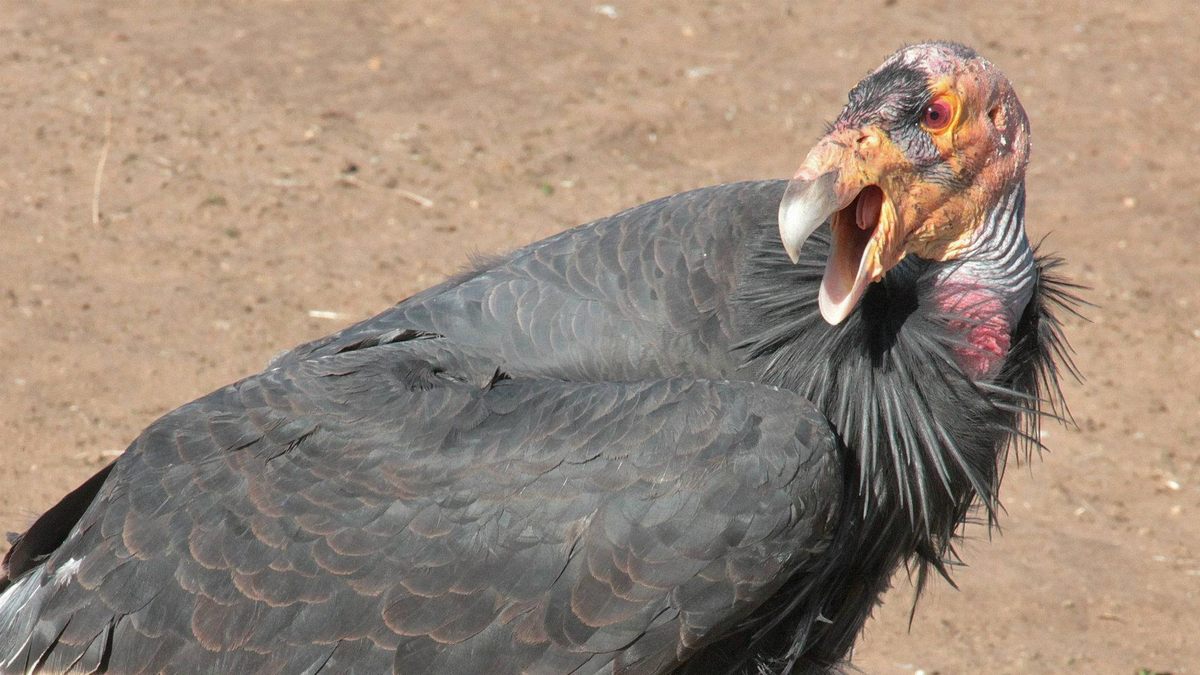
Condors are enormous birds, their wings stretching 10 feet (3 meters) and their weight about that of a human toddler. Of course, they’re born smaller than that, but the chicks grow to nearly adult size while still dependent on their parents for food. I was astonished when watching a “condor cam” video to see a condor parent swoop into a cliffside nest site to visit a chick that looked, to my untrained eye, every bit as big as the parent. (There’s no obvious visual difference between males and females, so I couldn’t tell if it was the mother or the father.) The chick’s head, however, was still covered with black feathers, in contrast to the red-skinned head of its parent. When the parent approached and opened its mouth, the chick promptly jammed its entire feathered head inside. The parent maintained a steady upright stance with mantled wings, as the baby frantically flapped and jerked to get its dinner.
I called the wildlife biologist Joe Burnett, who’s been working with condors for over 20 years, to talk about what I saw on the cam and the overall importance of chicks in the conservation of this species. Human impacts on the early life of condors have been severe, from DDT thinning their eggshells to plastic trash filling their guts. Plastic bottle caps and other bits of garbage aren’t eaten accidentally—parents collect them on purpose for their chicks, because they look like chips of bone or seashell. These natural sources of calcium are like vitamins for baby condors. “There was a chick in Southern California that was just full of bottle caps, and had to be euthanized,” says Burnett. But the main threat facing condors is lead poisoning. Many of the carcasses that they scavenge were shot by human hunters, and the ammunition left behind can be fatal. “We’re always devastated when we have a pair raising a chick and one of the pair dies of lead poisoning. We had that this year, in two nests. When you only have six nests, that’s kind of a big deal.”
Although losing a parent in two out of six nests is crushing news, even the fact that condors are nesting in the wild again seems like a minor miracle. In the 1980s, the species’ entire population of 27 was captured in the hopes of rebuilding greater numbers in captivity. It worked. Over time, condors hatched and raised in zoos were released to create several stable populations in the wild, and the total count as of 2020 was 504 individuals.

Burnett has been an integral part of this program, coordinating the first condor releases in central California in the 1990s and starting a captive breeding program at the Oregon Zoo in 2003. When he first took on the responsibility of incubating eggs in captivity, he says, he acquired a new respect for condor parents doing it in the wild.
Burnett recalls the media attention lavished on the first condor egg laid in captivity at the Oregon Zoo. “The Oregonian followed this egg like it was some rock star. I was getting calls every day from the lead reporter.” As is routine in captive breeding, he removed the egg from the pair that laid it, encouraging them to lay and incubate a second egg while the first was artificially incubated. This technique doubles a pair’s potential reproductive output. Burnett had set up a brand-new facility to receive the egg and was living on-site with his wife.
Then an early season ice storm shut down the city of Portland. “So power goes out, and I have an egg in an incubator, and we have to keep it going. I go out to pull the generator, I pull the cord and the cord breaks.” Burnett’s wife suggested heating water on their backpacking stove in order to keep the egg warm with a hot water bottle, so that’s what they did, continuously heating more water as the bottle cooled, monitoring the temperature with an analog thermometer. When they began running out of fuel, Burnett says, “I told my wife, this egg, if we can’t keep it warm, our body temperature is 98.6, I said, we will have to cuddle with this egg. And she was like, let’s do it.”
Just before it got to that point, news of the condor egg’s plight reached Portland Gas and Electric. They immediately prioritized restoring power to the incubator, and the egg was once again well situated. With the crisis of incubation over, the next question was “Who would care for the baby after hatching?” The original parents had indeed produced a new egg and were busy with that. The only condor pair available to hatch and care for the ice-storm egg had never laid an egg of their own and had no experience with babies. Burnett gave them the egg, hoping for the best, and the adoptive couple took to parenting like a condor to thermals. They successfully hatched and raised the chick, and he was released into the wild in 2006 at Pinnacles National Park in California. Burnett says, “He is now the top dog. He’s raised six chicks now; he’s breaking the curve in terms of survival. Every time I see him out in the field, we have a special bond.” Burnett amends this with a laugh. “He has no idea.”

As you can tell, raising a single chick is a huge investment for condor parents. They reproduce more like large mammals than like other birds. This effort is what allows the chick to grow from the size of an avocado to the size of an adult in six months. In addition to continuous feeding, the parents cuddle and play with their young chicks. Burnett admires the joint investment of both parents. “It’s really beautiful to watch these pairs raise chicks because it’s really equal. If more humans could be like that.”
After the first couple of months, the cuddling tapers off. The parents need to spend more time foraging for food, and the chick needs to be encouraged to get out of the nest, where it’s a sitting duck, so to speak, for predatory ravens, owls, eagles, and even other condors. In this context, Burnett explains the behavior of the older chick I saw on the condor cam. “They’re left alone a lot. When the parents show up, they’re incredibly excited, like someone that’s been in captivity or on an island. It’s the only social interaction they get, and they get fed. It’s almost violent, the way they feed. It’s super primal.” (Honestly, it reminds me of my newborn human latching on to my nipple on her first day, and a nurse in the hospital commenting, “I see you’ve got a little barracuda there.” Oh, the ferocity with which tiny creatures seek sustenance!)
Another change in condor parenting comes when the chick begins learning to fly. Now parents become guides and teachers. Burnett has watched condors on the central California coast nesting in both redwood trees and on cliffs, and he observes differences in learning to fly between these two environments. The cliff sites are more open, which usually lets the chicks learn faster, while redwoods slow them down. Each location has its advantages. A fast entry to the world of flight means more crashes, like a baby accumulating bruises in its hurry to walk—but walk it does, and quickly. A slower approach offers more time to build both muscles and confidence, though it can take longer to reach competence.
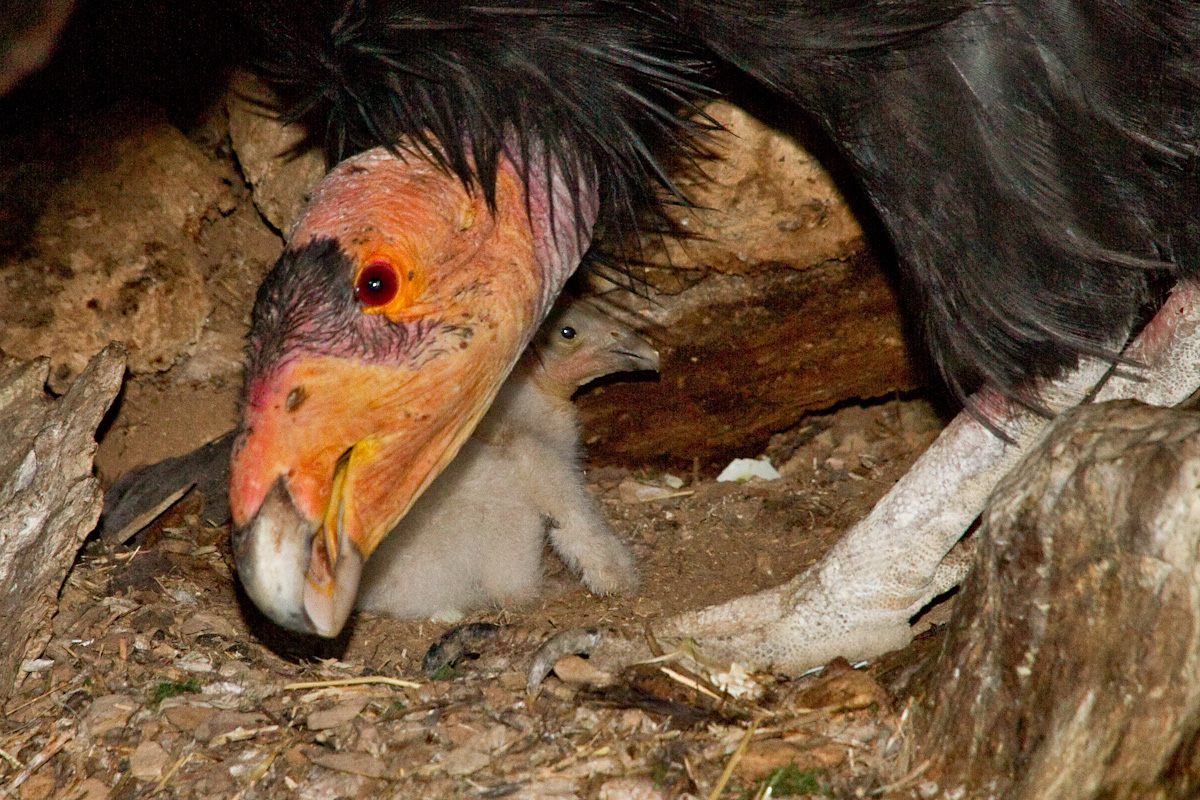
Because one of the risks to the still-precarious condor population is West Nile virus, field workers carry out a program of vaccination. All condor parents have now been vaccinated, and mothers pass some antibodies into their eggs—another investment in her offspring, along with yolk. But these antibodies don’t last long, so biologists aim to vaccinate the chicks as soon as they can reach them. They face the challenge of not merely accessing remote nests but also dealing with the chicks’ disgustingly effective tactic for deterring predators. “When you approach, they regurgitate whatever they’ve been fed by Mom and Dad,” says Burnett. “It’s pretty gross. It’s not only rotten meat, but it’s partially digested rotten meat, and it’s putrid.”
On one vaccination visit to a chick in Pinnacles, which is about 40 miles (64 kilometers) inland, Burnett whiffed a familiar flavor of putrid that he hadn’t expected: marine mammal meat. This chick, who had never seen the sea, had regurgitated a meal of decaying whale or dolphin that a parent must have scavenged from the distant coast. These inland birds have a connection to the ocean, thought Burnett, reminded of the way ecosystems and their inhabitants are interwoven. How cool is that?
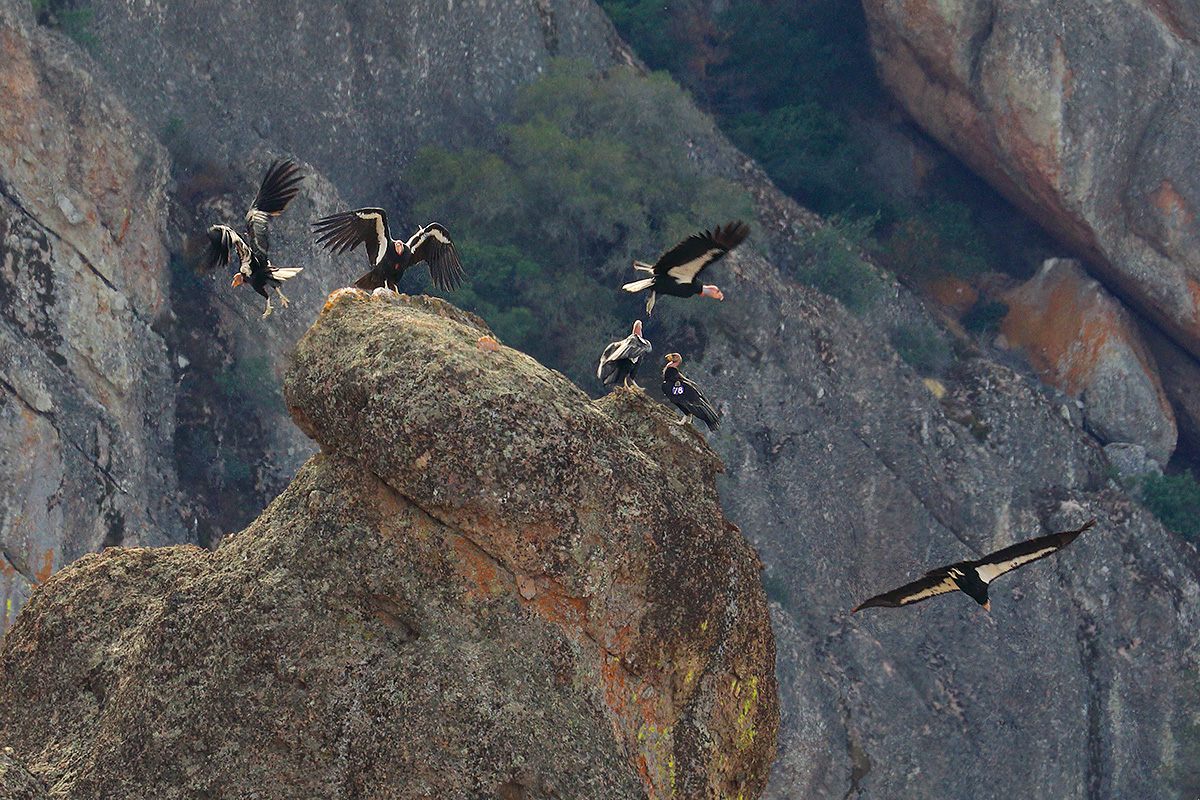

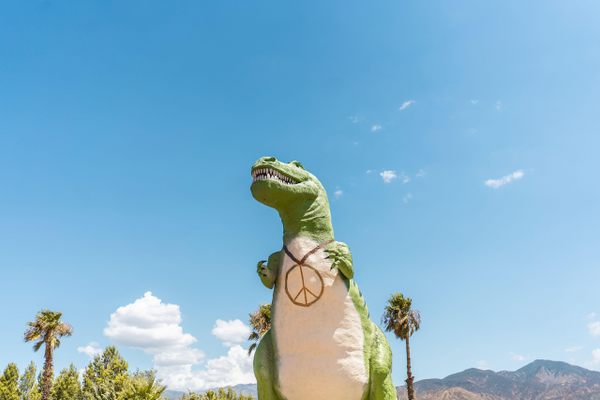
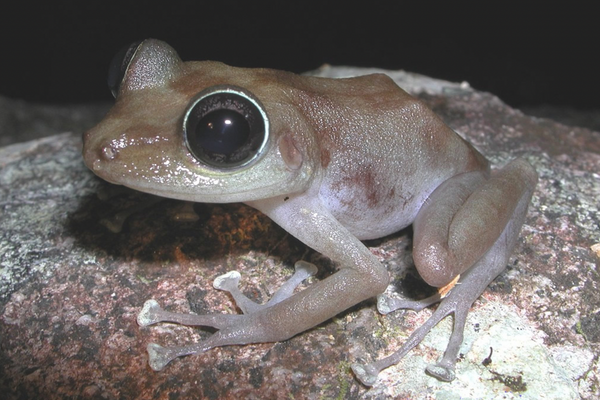

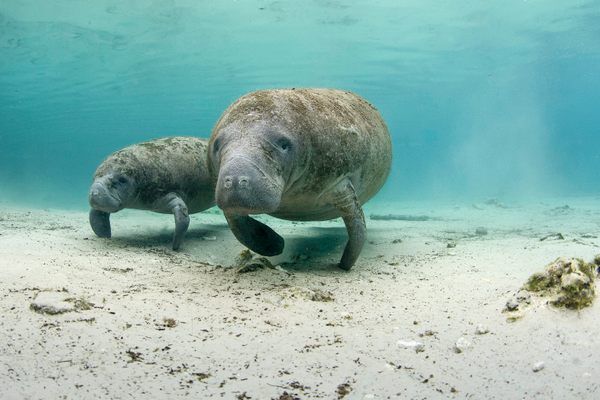



















Follow us on Twitter to get the latest on the world's hidden wonders.
Like us on Facebook to get the latest on the world's hidden wonders.
Follow us on Twitter Like us on Facebook